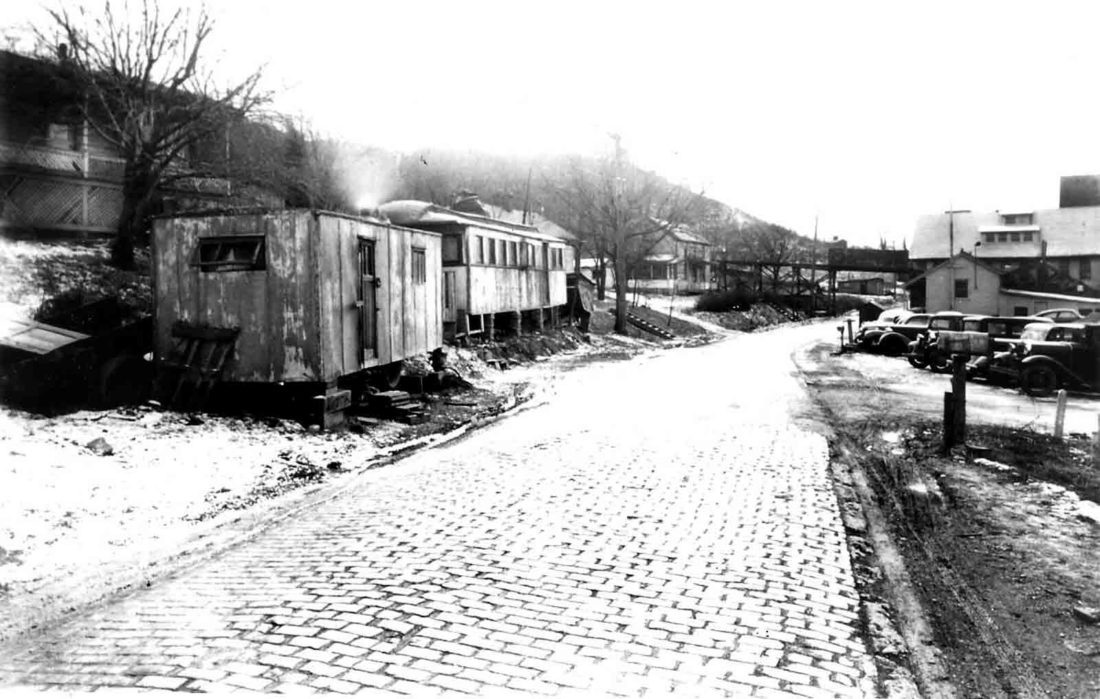Look Back: Bricks pave way in Parkersburg

Photo from historical society archives The section of the Staunton to Parkersburg Turnpike shown above is just east of the old Worthington Creek bridge; a portion of the “tile plant” can be seen in the right of the photo. There was one brick plant just before crossing Worthington Creek, and another just around the bend beyond the tile plant. The trestle, seen crossing “the pike,” brought clay from the mines on Lee’s Hill into the tile plant. The brick pavers used in this section were placed over a bed of sand. A mile or so farther out “the pike,” they were laid over approximately four inches of a concrete type material.
Brickyards consolidated
A business deal of importance was made Saturday by which the Copen and Stewart brickyards were consolidated. Henceforth the business of the two companies will be conducted as one. Mr. Copen will have charge of the manufacture and Mr. Henry Stewart will have charge of the sales.
There was a sharp competition between the two companies as to prices, and they united in order to keep from ruining the business.
The Parkersburg Weekly Sentinel
Feb. 2, 1893
***
Speaking of pavements
A good wash for bricks which will keep the weeds down and make a nice appearance, is powdered Venetian Red, mixed with either lamp oil or the natural oil. Do not mix as thick as paint, but make a wash thin enough to be scrubbed in with an old broom.
Done in this way, perhaps twice in the summer, the pavement will present a neat appearance with a small outlay of labor and money.
Salt, for bricks, is not recommended, for the reason that it leaves white blotches that seem to last forever and look as bad as the weeds themselves.
I hope these suggestions will be taken seriously, for it grates on my nerves to see a fine establishment disfigured by a neglected front walk or pavement.
Everybody (I suppose) has some cranky notion, and this is one of mine.
The Parkersburg Daily State Journal
May 12, 1900
***
Brick plant
This city is to have another industry and one that will not only start out as a paying one, but which will grow with the city. It is to be a brick plant, the proprietor and owner of which will be M.B. Stephenson, well known in this city where he resides.
The plant will be erected on the Stephenson property near the White Bridge [Worthington Creek] where the Haley and Clark plant was located and where there is an abundance of fire clay for brick manufacturing purposes.
The new plant will employ between twenty-five and thirty hands at first but Mr. Stephenson expects to increase its capacity in a short time.
The capacity of the plant will be 60,000 per day at present. Three large building are now being put up on the site of the plant. Contractor Joel Woods is doing the work.
The Parkersburg Daily State Journal
Feb. 23, 1903
***
Bob Enoch is the president of the Wood County Historical Society. The group meets at 7p.m. on the last Monday of each month in the Summers Auditorium at the Wood County Public Library on Emerson Avenue. They do not meet in December. For more information, contact P.O. Box 565, Parkersburg, WV 26102.


